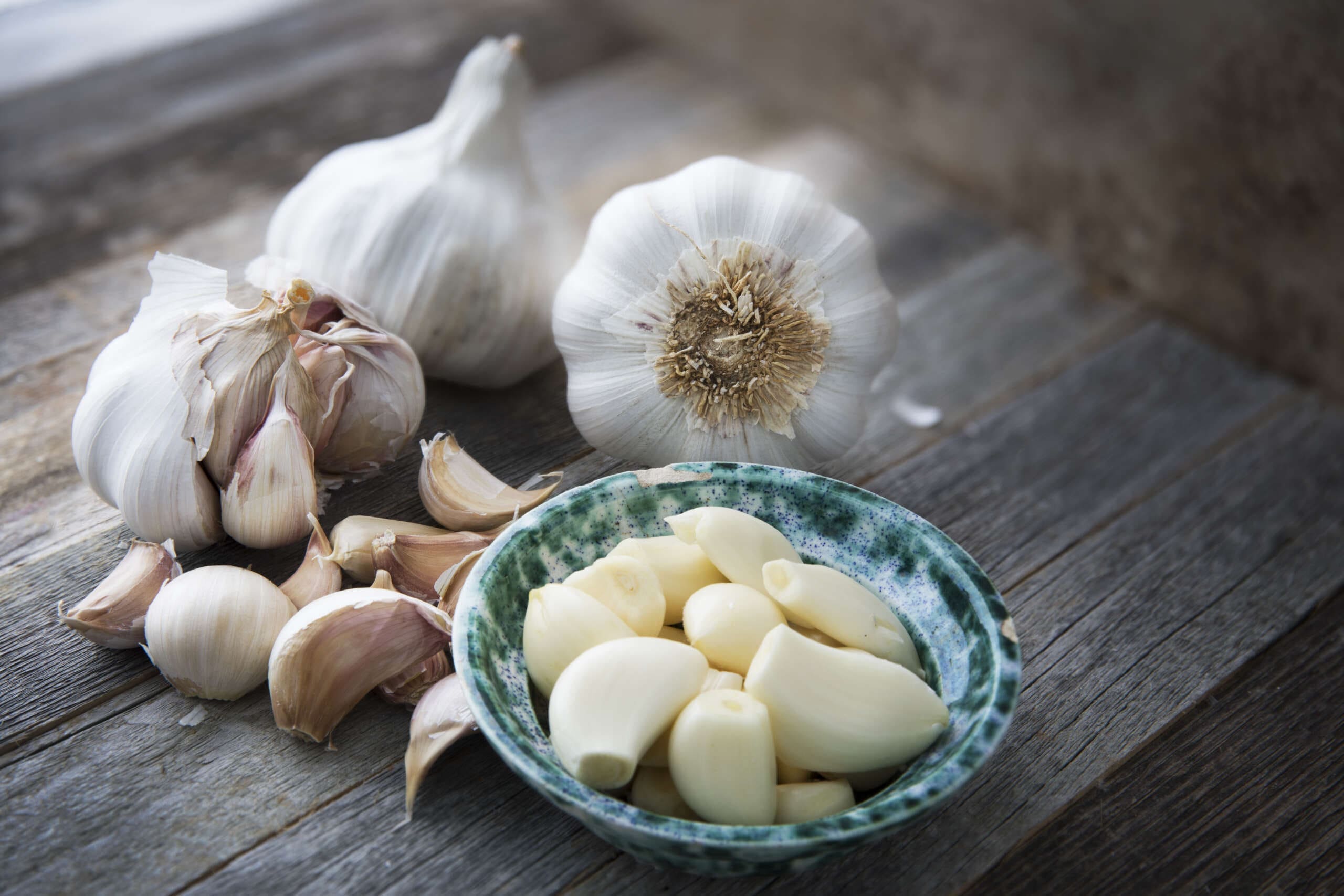
Uncover the connection between garlic and anti-inflammatory relief for improved musculoskeletal pain management.
Table of Contents
Functional Medicine and Anti-Inflammatory Diets: A Holistic Approach to Managing Musculoskeletal Pain
Musculoskeletal pain, including back pain, neck pain, or joint discomfort, affects millions of people, significantly impacting their quality of life and daily activities. For those seeking nonsurgical, natural solutions, functional medicine combined with an anti-inflammatory diet offers a powerful, patient-centered approach. This comprehensive guide explores how functional medicine, paired with anti-inflammatory foods like garlic, can reduce musculoskeletal pain, support immune health, and promote the body’s natural healing processes. Drawing on evidence-based insights from peer-reviewed research and clinical expertise, this article provides practical strategies to manage pain and enhance overall wellness.
Understanding Musculoskeletal Pain
Musculoskeletal pain refers to discomfort in muscles, bones, ligaments, tendons, or nerves. It can range from mild aches to severe, chronic conditions that limit mobility. Common forms include lower back pain, arthritis-related joint pain, and muscle soreness, often triggered by injuries, overuse, or chronic diseases.
Factors Contributing to Musculoskeletal Pain
Several factors contribute to musculoskeletal pain, including:
- Injury and Trauma: Acute injuries, such as sprains, strains, or fractures, can damage tissues, leading to pain. For example, auto accidents or sports injuries can cause whiplash or soft tissue damage (Southwest Functional Medicine, n.d.).
- Poor Posture and Repetitive Stress: Prolonged sitting, improper ergonomics, or repetitive motions strain muscles and joints. Slouching at a desk or repetitive lifting can lead to chronic pain (Southwest Functional Medicine, n.d.).
- Chronic Inflammation: Inflammation, often fueled by poor diet, stress, or autoimmune conditions, amplifies pain by sensitizing nerves and damaging tissues (Sala-Climent et al., 2023).
- Sedentary Lifestyle: Lack of physical activity weakens muscles and reduces joint flexibility, increasing pain risk. Excess weight from inactivity also stresses joints (Dragan et al., 2020).
- Stress and Emotional Factors: Chronic stress or anxiety causes muscle tension, particularly in the neck and shoulders, and elevates cortisol, promoting inflammation (Sala-Climent et al., 2023).
- Nutritional Deficiencies: Diets low in anti-inflammatory nutrients, such as omega-3 fatty acids or antioxidants, impair tissue repair and increase inflammation (Rawson et al., 2018).
- Chronic Conditions: Diseases like fibromyalgia, osteoarthritis, or autoimmune disorders cause persistent pain due to ongoing inflammation or structural damage (Dragan et al., 2020).
Addressing these factors through a holistic approach is key to effective pain management. Functional medicine, with its focus on root causes, combined with dietary strategies, offers a comprehensive solution.
The Role of Functional Medicine in Pain Management
Functional medicine is a science-based, patient-centered approach that identifies and addresses the underlying causes of health issues, rather than just treating symptoms. It integrates traditional medical practices with lifestyle interventions, nutrition, and diagnostic testing to restore optimal health (Southwest Functional Medicine, n.d.).
Clinical Rationale for Functional Medicine
Functional medicine is effective for musculoskeletal pain because it considers the interconnectedness of the body’s systems, including genetics, lifestyle, and environmental factors. The clinical rationale includes:
- Root Cause Identification: Functional medicine utilizes detailed laboratory work and patient histories to identify triggers, such as inflammation, nutrient deficiencies, or hormonal imbalances, that contribute to pain (Southwest Functional Medicine, n.d.).
- Personalized Treatment Plans: By assessing each patient’s unique physiology, functional medicine tailors interventions, such as nutrition and exercise, to address specific needs (Southwest Functional Medicine, n.d.).
- Reduced Inflammation: Functional medicine emphasizes anti-inflammatory diets and stress management to lower inflammatory markers, reducing pain sensitivity (Sala-Climent et al., 2023).
- Enhanced Healing: By optimizing organ function and nutrient status, functional medicine supports the body’s natural ability to repair tissues and reduce pain (Rawson et al., 2018).
- Prevention of Chronic Issues: Addressing root causes prevents pain from progressing into degenerative conditions, such as chronic disc disease or arthritis (Southwest Functional Medicine, n.d.).
Nonsurgical Treatments in Functional Medicine
Functional medicine incorporates various nonsurgical therapies to manage pain and promote healing:
- Nutritional Counseling: Personalized dietary plans, including those rich in anti-inflammatory foods, address inflammation and support tissue repair (Southwest Functional Medicine, n.d.).
- Targeted exercises, such as yoga or physical therapy, that strengthen and improve mobility can enhance muscle support and joint function, thereby reducing the recurrence of pain (Dragan et al., 2020).
- Stress Management: Techniques such as meditation or mindfulness can reduce cortisol levels, thereby alleviating muscle tension and inflammation (Sala-Climent et al., 2023).
- Integrative Therapies: Massage, acupuncture, or detoxification programs complement functional medicine by improving circulation, reducing pain, and supporting overall wellness (Southwest Functional Medicine, n.d.).
Clear patient-provider communication is vital. Functional medicine practitioners listen to patients’ stories, fostering collaboration and empowering individuals to take an active role in their healing (Southwest Functional Medicine, n.d.).
The Power of an Anti-Inflammatory Diet
Chronic inflammation is a significant contributor to musculoskeletal pain. An anti-inflammatory diet, rich in foods like garlic, reduces inflammation, supports immune function, and enhances healing.
Clinical Rationale for an Anti-Inflammatory Diet
Anti-inflammatory diets, such as the Mediterranean diet or the AnMeD-S (a modified version excluding red meat, gluten, and cow’s milk), reduce pain by targeting inflammation at the cellular level. The clinical rationale includes:
- Lowered Inflammatory Markers: Foods rich in antioxidants and omega-3 fatty acids reduce cytokines like TNF-?, which amplify pain (Quesada et al., 2020).
- Improved Tissue Repair: Nutrients like vitamin D, collagen, and organosulfur compounds support tissue regeneration, aiding recovery from injuries (Rawson et al., 2018).
- Immune System Support: Anti-inflammatory foods enhance immune function, reducing the risk of infections or autoimmune responses that worsen pain (Ahmed et al., 2021).
- Enhanced Quality of Life: Diets that reduce inflammation improve pain, stress, sleep, and overall well-being (Sala-Climent et al., 2023).
The Role of Garlic in Reducing Inflammation
Garlic (Allium sativum) is a cornerstone of anti-inflammatory diets due to its bioactive compounds, which have been used for centuries in traditional medicine.
How Garlic Reduces Inflammation
Garlic’s organosulfur compounds, such as allicin, S-allyl cysteine, and diallyl disulfide, provide potent anti-inflammatory and antioxidant effects:
- Suppress Pro-Inflammatory Cytokines: Garlic inhibits cytokines like IL-6, reducing inflammation and pain sensitivity (Quesada et al., 2020).
- Antioxidant Protection: Garlic neutralizes free radicals, protecting muscles and joints from oxidative damage (Ahmed et al., 2021).
- Immune Boost: Garlic enhances white blood cell activity, strengthening the immune system and reducing inflammation-causing infections (El Paso Back Clinic, n.d.).
- Cardiovascular Support: By improving blood flow and reducing blood pressure, garlic aids tissue healing, which is critical for pain relief (Imaizumi et al., 2023).
Nutritional Facts and Benefits of Garlic
Garlic is a nutrient-rich food with wide-ranging health benefits:
- Nutritional Profile: A single clove (3 grams) of raw garlic provides about 4 calories, 0.2 grams of protein, 1 gram of carbohydrates, and minimal fat. It contains manganese, vitamin C, vitamin B6, and fiber (El Paso Back Clinic, n.d.).
- Key Bioactive Compounds:
- Allicin: Formed when garlic is chopped or crushed, allicin is responsible for garlic’s antibacterial and anti-inflammatory properties. It requires 5–10 minutes to activate before cooking (El Paso Back Clinic, n.d.).
- S-allyl Cysteine: Abundant in black garlic, this compound enhances antioxidant effects (Ahmed et al., 2021).
- Diallyl Disulfide: Supports cardiovascular health and reduces inflammation (Quesada et al., 2020).
- Health Benefits:
- Cardiovascular Health: Garlic has been shown to lower cholesterol, triglycerides, and blood pressure, thereby reducing cardiovascular risk (Imaizumi et al., 2023).
- Antidiabetic Effects: Garlic improves insulin sensitivity and blood sugar control, supporting metabolic health (Liu et al., 2007).
- Anti-Cancer Potential: Early research suggests garlic may inhibit cancer cell growth (El Paso Back Clinic, n.d.).
- Antimicrobial Action: Allicin fights bacteria, viruses, and fungi, bolstering immune health (Tattelman, 2005).
Incorporating Garlic into Your Diet
To maximize garlic’s benefits:
- Preparation: Crush, chop, or mince garlic and let it sit for 5–10 minutes to activate allicin. Cooking too soon deactivates beneficial enzymes (El Paso Back Clinic, n.d.).
- Recipes: Add garlic to soups, sauces, or stir-fries. For a simple dish, try “Spaghetti, Oil, and Garlic”: brown chopped garlic in olive oil after letting it sit, mix with pasta and reserved starchy water, and top with parsley, lemon zest, and Parmesan (El Paso Back Clinic, n.d.).
- Dosage: Consuming 1–2 cloves daily can provide health benefits. Try chopping a clove, letting it sit, and swallowing it with water in the morning (El Paso Back Clinic, n.d.).
Fighting Inflammation Naturally- Video
Synergy of Functional Medicine and Anti-Inflammatory Diets
Functional medicine and anti-inflammatory diets work synergistically to address musculoskeletal pain by targeting both biochemical and systemic factors:
- Pain Relief: Functional medicine corrects underlying imbalances, while garlic and other anti-inflammatory foods reduce pain-causing inflammation (Quesada et al., 2020; Southwest Functional Medicine, n.d.).
- Enhanced Healing: Nutritional interventions provide essential nutrients for tissue repair, while functional medicine optimizes organ function and circulation (Rawson et al., 2018).
- Prevention: This integrative approach prevents pain progression by addressing root causes like poor diet, stress, or inflammation (Southwest Functional Medicine, n.d.).
Functional medicine practitioners create personalized plans that combine nutrition, exercise, and stress management, ensuring holistic care tailored to each patient’s needs (Southwest Functional Medicine, n.d.).
Practical Tips for Managing Musculoskeletal Pain
- Work with a Functional Medicine Practitioner: Collaborate with a provider to develop a personalized plan based on lab work and health history (Southwest Functional Medicine, n.d.).
- Follow an Anti-Inflammatory Diet: Include garlic, fatty fish, berries, and leafy greens while avoiding pro-inflammatory foods like processed sugars or gluten if sensitive (Sala-Climent et al., 2023).
- Stay Active: Engage in low-impact activities like walking or yoga to maintain flexibility and strength. Consult your practitioner for tailored exercises (Dragan et al., 2020).
- Manage Stress: Practice mindfulness or deep breathing to reduce muscle tension and inflammation (Sala-Climent et al., 2023).
- Track Progress: Keep a journal of symptoms, diet, and treatment outcomes to share with your practitioner for plan adjustments (Southwest Functional Medicine, n.d.).
Potential Risks and Considerations
- Functional Medicine: Lab-based interventions are generally safe but require professional oversight to ensure accuracy and efficacy (Southwest Functional Medicine, n.d.).
- Garlic Consumption: Consuming excessive garlic may cause digestive issues or interact with blood-thinning medications. Discontinue high doses 7–10 days before surgery (Tattelman, 2005).
- Individual Responses: Dietary and functional medicine interventions vary by individual. Regular monitoring ensures optimal outcomes (Southwest Functional Medicine, n.d.).
Conclusion
Functional medicine, combined with an anti-inflammatory diet rich in foods like garlic, offers a holistic, nonsurgical approach to managing musculoskeletal pain. By addressing root causes—such as inflammation, nutrient deficiencies, and lifestyle factors—this integrative strategy reduces pain, supports immune health, and promotes natural healing. Through personalized care, clear communication, and evidence-based interventions, patients can achieve lasting relief and improved quality of life.
References
- Ahmed, T., Wang, C. K., & Wang, R. (2021). Black garlic and its bioactive compounds on human health diseases: A review. Molecules, 26(16), 5028. doi.org/10.3390/molecules26165028
- Dragan, S., ?erban, M. C., Damian, G., Buleu, F., Valcovici, M., & Christodorescu, R. (2020). Dietary patterns and interventions to alleviate chronic pain. Nutrients, 12(9), 2510. doi.org/10.3390/nu12092510
- El Paso Back Clinic. (n.d.). Garlic for back pain: Does it work? elpasobackclinic.com/garlic-for-back-pain-does-it-work/
- Imaizumi, V. M., Laurino, M. V., Manfio, M., Guiguer, E. L., Araujo, A. C., Barbalho, S. M., & Bueno, P. C. D. S. (2023). Garlic: A systematic review of the effects on cardiovascular diseases. Critical Reviews in Food Science and Nutrition, 63(24), 6797–6819. doi.org/10.1080/10408398.2022.2043821
- Liu, C. T., Hse, H., Lii, C. K., Chen, P. S., & Sheen, L. Y. (2007). Does garlic have a role as an antidiabetic agent? Molecular Nutrition & Food Research, 51(11), 1353–1364. doi.org/10.1002/mnfr.200700082
- Pérez-Rubio, K. G., Méndez-Del Villar, M., & Cortez-Navarrete, M. (2022). The Role of Garlic in Metabolic Diseases: A Review. Journal of Medicinal Food, 25(7), 683–694. doi.org/10.1089/jmf.2021.0146
- Quesada, I., de Paola, M., Álvarez, C., & Henao, S. (2020). Effect of garlic’s active constituents in inflammation, obesity, and cardiovascular disease. Current Hypertension Reports, 22(1), 6. doi.org/10.1007/s11906-019-1009-9
- Rawson, E. S., Miles, M. P., & Larson-Meyer, D. E. (2018). Dietary supplements for health, adaptation, and recovery in athletes. International Journal of Sport Nutrition and Exercise Metabolism, 28(2), 188–199. doi.org/10.1123/ijsnem.2017-0340
- Sala-Climent, M., López-García, M. J., Alacreu, M., Tortosa-Chuliá, M. Á., & Pérez-Ros, P. (2023). The effect of an anti-inflammatory diet on chronic pain: A pilot study. Frontiers in Nutrition, 10, 1205526. doi.org/10.3389/fnut.2023.1205526
- Southwest Functional Medicine. (n.d.). El Paso, TX Health Coach Clinic – Functional Medicine and Wellness. healthcoach.clinic/
- Tattelman, E. (2005). Health effects of garlic. American Family Physician, 72(1), 103–106. pubmed.ncbi.nlm.nih.gov/16035690/
Disclaimers
Professional Scope of Practice *
The information herein on "Anti-Inflammatory Remedies Using Garlic for Musculoskeletal Pain" is not intended to replace a one-on-one relationship with a qualified health care professional or licensed physician and is not medical advice. We encourage you to make healthcare decisions based on your research and partnership with a qualified healthcare professional.
Blog Information & Scope Discussions
Welcome to El Paso's wellness blog, where Dr. Alex Jimenez, DC, FNP-C, a board-certified Family Practice Nurse Practitioner (FNP-C) and Chiropractor (DC), presents insights on how our team is dedicated to holistic healing and personalized care. Our practice aligns with evidence-based treatment protocols inspired by integrative medicine principles, similar to those found on dralexjimenez.com, focusing on restoring health naturally for patients of all ages.
Our areas of chiropractic practice include Wellness & Nutrition, Chronic Pain, Personal Injury, Auto Accident Care, Work Injuries, Back Injury, Low Back Pain, Neck Pain, Migraine Headaches, Sports Injuries, Severe Sciatica, Scoliosis, Complex Herniated Discs, Fibromyalgia, Chronic Pain, Complex Injuries, Stress Management, Functional Medicine Treatments, and in-scope care protocols.
Our information scope is limited to chiropractic, musculoskeletal, physical medicine, wellness, contributing etiological viscerosomatic disturbances within clinical presentations, associated somato-visceral reflex clinical dynamics, subluxation complexes, sensitive health issues, and functional medicine articles, topics, and discussions.
We provide and present clinical collaboration with specialists from various disciplines. Each specialist is governed by their professional scope of practice and their jurisdiction of licensure. We use functional health & wellness protocols to treat and support care for the injuries or disorders of the musculoskeletal system.
Our videos, posts, topics, subjects, and insights cover clinical matters, issues, and topics that relate to and directly or indirectly support our clinical scope of practice.*
Our office has reasonably attempted to provide supportive citations and has identified the relevant research studies or studies supporting our posts. We provide copies of supporting research studies available to regulatory boards and the public upon request.
We understand that we cover matters that require an additional explanation of how they may assist in a particular care plan or treatment protocol; therefore, to discuss the subject matter above further, please feel free to ask Dr. Alex Jimenez, DC, APRN, FNP-BC, or contact us at 915-850-0900.
We are here to help you and your family.
Blessings
Dr. Alex Jimenez DC, MSACP, APRN, FNP-BC*, CCST, IFMCP, CFMP, ATN
email: coach@elpasofunctionalmedicine.com
Licensed as a Doctor of Chiropractic (DC) in Texas & New Mexico*
Texas DC License # TX5807
New Mexico DC License # NM-DC2182
Licensed as a Registered Nurse (RN*) in Texas & Multistate
Texas RN License # 1191402
ANCC FNP-BC: Board Certified Nurse Practitioner*
Compact Status: Multi-State License: Authorized to Practice in 40 States*
Graduate with Honors: ICHS: MSN-FNP (Family Nurse Practitioner Program)
Degree Granted. Master's in Family Practice MSN Diploma (Cum Laude)
Dr. Alex Jimenez, DC, APRN, FNP-BC*, CFMP, IFMCP, ATN, CCST
My Digital Business Card




